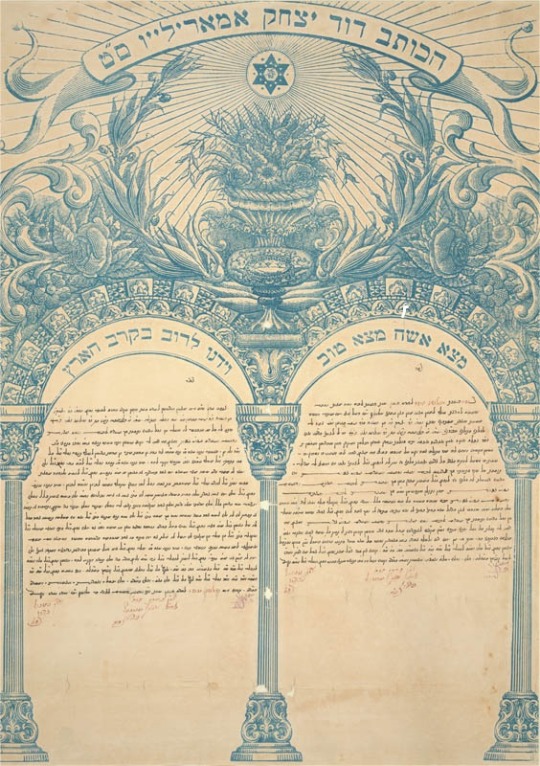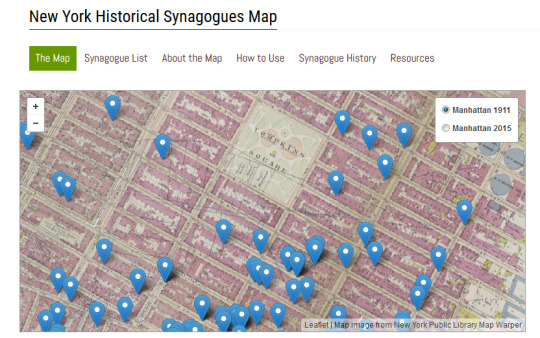In honor of Women’s History Month, I
would like to offer some guidance to those who are seeking to discover and
share the stories of their elusive female ancestors. One of the most common
“brick walls” that genealogy researchers face when tracing the family history
of a female ancestor is that their family doesn’t know her maiden name. For
centuries in much of the Western world, the practice of women replacing their
surname with their husband’s surname upon marriage has effectively severed
these individuals from their genealogical lineages. Learning a woman’s maiden name is a crucial
first step for the modern researcher trying to find documents that shed light
on a woman’s early life (prior to her marriage) or that trace her ancestry back
to previous generations.

Marriage contract of Yitzhak son of
Moshe(?) Benjamin and Palomba daughter of Shulami Halevy; artist: David Isaac
Amarillo; Salonika, 1897; Lithograph on paper with handwritten text.
Collection of Yeshiva University
Museum, New York
Gift of Grace Grant
Ironically,
the very documents which mark the occasion on which women are typically stripped
of their maiden names are the ones that hold the greatest potential as the
source of those names. Of course, I am referring to a woman’s marriage records.
Depending on the place, time, and religious affiliation of the wedding, any
number of records may have been issued to show the couple’s intent to marry,
such as marriage banns, intentions, bonds, newspaper announcements, licenses,
and applications, and to document the actual wedding, such as marriage
contracts (the ketubah in the Jewish
tradition, pictured above), registers, and certificates. With the exception of
those that are passed down as family heirlooms, historical religious marriage
records have scarcely survived. On the other hand, civil marriage records, even
centuries old, are much more likely to have been maintained by a local clerk,
registrar, or archives to the present day. For more information on how to
locate U.S. marriage records, please consult the Ackman & Ziff Family
Genealogy Institute’s vital records research guide here. For
international marriage records, please select our research guide pertaining to
your ancestor’s country of marriage
When
a marriage record cannot be located or does not contain a maiden name, there
are a number of alternative sources to pursue, beginning with other types of
vital records. The birth records of a woman’s children are the second best
source for her maiden name, because most birth records solicit that information
and the informant (i.e. the person who supplied the information) is typically
the woman herself. Records pertaining to a woman’s death, such as death
certificates and registers, cemetery ledgers, gravestones, obituaries, and
probate records, should be used with caution. If the informant is identified on
the document, think about whether that person is likely to have accurately
recalled the deceased’s maiden name. If the informant is not identified, think
about whether the deceased’s closest surviving relatives are likely to have
recalled her maiden name. When in doubt, try to corroborate the name supplied
with additional sources. Further guidance: U.S. birth records, U.S. death records, international records by country.
There are several less commonly used U.S.
sources of maiden names that may help you when the aforementioned sources fail.
First, if your female ancestor was already married when she emigrated to the
U.S., check her and her husband’s immigration records (also known as passenger
arrival lists or manifests). They may have identified the woman’s father or one
of her brothers (all of whom shared her maiden name) as their closest living
relative in their native country or as the relative who they were joining in
the U.S. Second, review your female
ancestor’s U.S. federal and state census records. Multi-generational extended
family households were much more common in the 19th and early 20th
centuries than they are today. Well into your ancestor’s married life, you may
find one of her unmarried siblings or one of her widowed parents living in her
household. Lastly, a couple of unexpected, but reliable sources for a woman’s
maiden name include her social security application and her husband’s veteran
pension file (if he served in the U.S. military and predeceased her). Further
guidance: immigration records , census records , social security applications , veterans’ pension files .
It is important to note
that there are exceptions to this name change pattern. For example, in Spanish-speaking
countries, Portuguese-speaking countries, Italy, France, the Netherlands, and
Belgium, among others, women have traditionally retained their maiden names
throughout their lives, at least in official documents, and, in many cases,
also colloquially. In the historical regions of Galicia (straddling modern
Poland and the Ukraine), and Bohemia and Moravia (modern Czech Republic), only
the eldest son of a Jewish family was permitted to have a civil marriage and to
pass on his surname to his children; these laws effectively forced many younger
sons to have only a religious marriage and to register their children under
their wife’s maiden name.
Women’s lives are often
erased from the historical record. Women’s History Month is, in part, a
corrective measure to this regrettable trend. Through all of the variations
discussed above, the librarians at the Genealogy Center are dedicated to
helping you discover more about your female ancestors and their families.
Please visit us in person or online to learn more.


